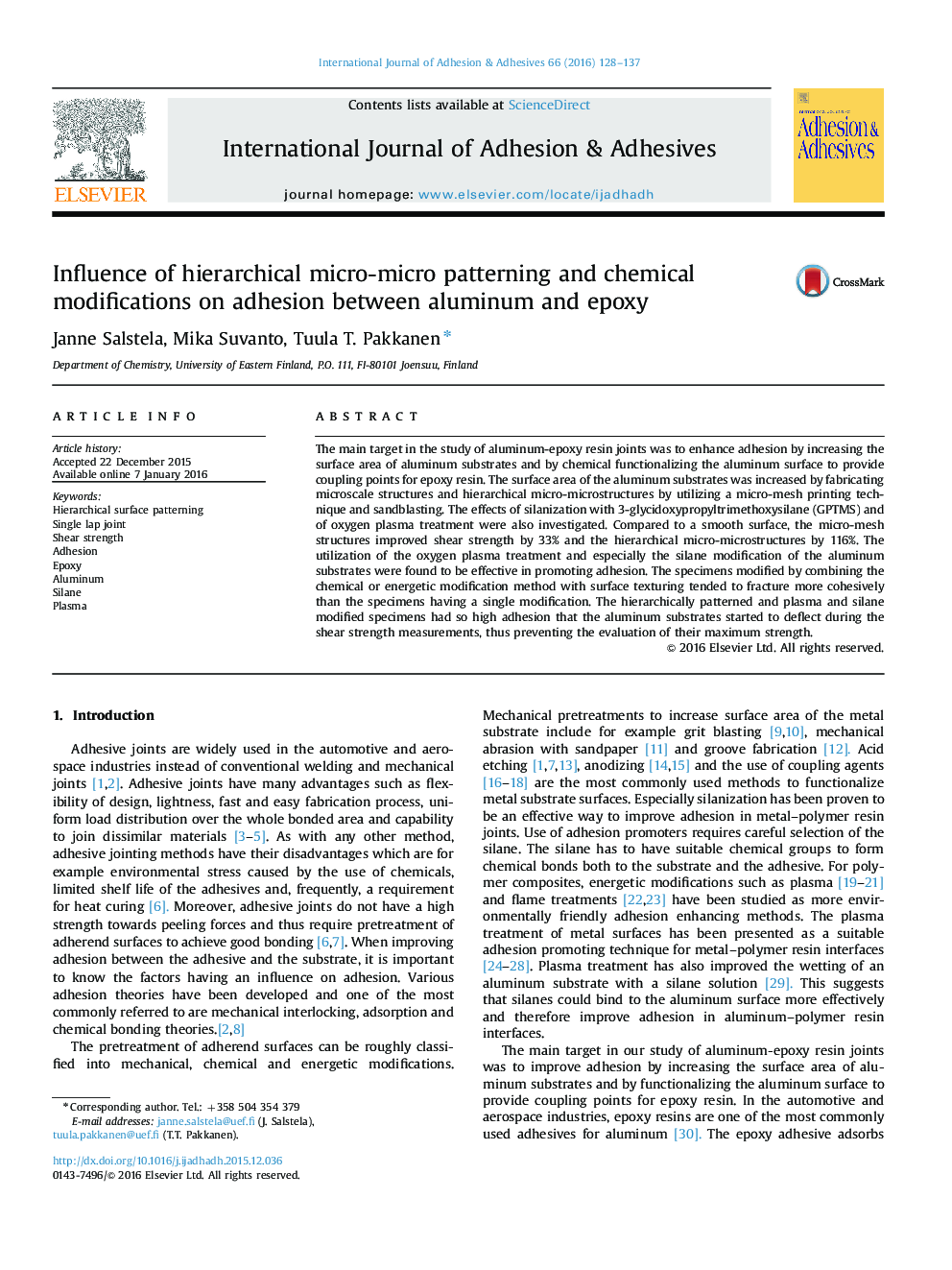| Article ID | Journal | Published Year | Pages | File Type |
|---|---|---|---|---|
| 776606 | International Journal of Adhesion and Adhesives | 2016 | 10 Pages |
The main target in the study of aluminum-epoxy resin joints was to enhance adhesion by increasing the surface area of aluminum substrates and by chemical functionalizing the aluminum surface to provide coupling points for epoxy resin. The surface area of the aluminum substrates was increased by fabricating microscale structures and hierarchical micro-microstructures by utilizing a micro-mesh printing technique and sandblasting. The effects of silanization with 3-glycidoxypropyltrimethoxysilane (GPTMS) and of oxygen plasma treatment were also investigated. Compared to a smooth surface, the micro-mesh structures improved shear strength by 33% and the hierarchical micro-microstructures by 116%. The utilization of the oxygen plasma treatment and especially the silane modification of the aluminum substrates were found to be effective in promoting adhesion. The specimens modified by combining the chemical or energetic modification method with surface texturing tended to fracture more cohesively than the specimens having a single modification. The hierarchically patterned and plasma and silane modified specimens had so high adhesion that the aluminum substrates started to deflect during the shear strength measurements, thus preventing the evaluation of their maximum strength.
